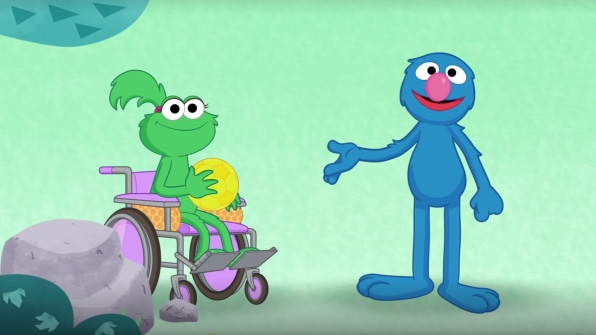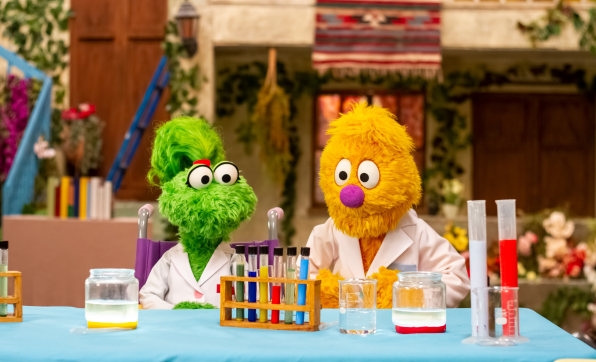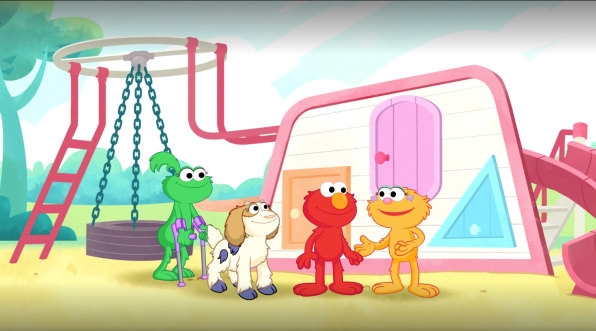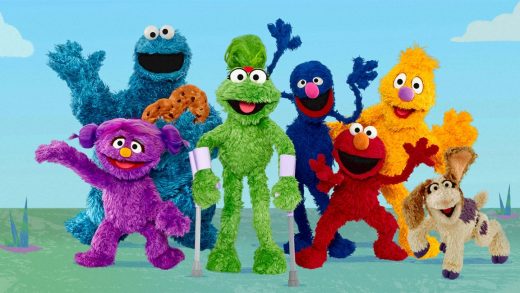Sesame Street’s newest Muppet is Ameera, a disabled refugee
The newest Muppet is green, furry, loves science, uses a wheelchair, and will support children affected by conflict. Named Ameera, the character is debuting on Ahlan Simsim (translation: Welcome Sesame), the version of Sesame Street that airs in the Middle East and North Africa and focuses on issues faced by refugees. She’s also a part of a new animated series that’s designed to be quickly deployed in a crisis when children are displaced from their homes. A Ukrainian-language version is in development now.
Around the world, an estimated 12 million people with disabilities have been forcibly displaced by war and persecution, though the real number is likely higher. Many are children, and Ameera, who is 8 years old in the world of Muppets, helps represent them. “We thought, let’s create a girl character who is really funny and loves to lead with comedy, and is wise in a lot of ways, and loves science and loves basketball,” says Scott Cameron, executive producer of international social impact at Sesame Workshop. “And let’s also represent all of the children around the world who may not see themselves on-screen who use mobility gear—in this case, Ameera uses a wheelchair and forearm crutches.”

As a live-action puppet, she’ll appear on the show with Muppet refugee characters in scenes shot in Jordan, interacting with children living there. But in a series of short animated videos, she’ll be part of another show that will be used globally. “We have long wanted to find ways to make a really substantial amount of content that we could quickly deploy in crisis situations, just like what we’re seeing in Ukraine,” Cameron says.

To make the animated show universally accessible, the team used only furry characters like Ameera rather than more human-looking characters like Ernie or Bert. “Those characters are especially useful when we’re making content that can be used in more than one context,” he says. “Since we’re not giving them hairstyles and clothing and accessories that might be viewed as being specific to a given culture, we’re able to make them feel like they belong everywhere.”
The setting is a park that also was carefully designed, with advisers from multiple countries, to look like it might be anywhere. The benches, for example, were designed after surveying benches around the world. “The New York City park bench looks very different from a park bench in Bangladesh,” Cameron notes. The team ended up drawing a simple wooden bench. It’s a detail that few viewers will notice. But when children around the world watch the show in tests, “they’re immediately seeing these characters as part of their neighborhood or their friends,” he says.

The animated show, called Watch, Play, Learn, presents early-childhood education in subjects like math and science, along with social, emotional learning that can be especially relevant to a child in a crisis situation, such as dealing with fear and big emotions. Episodes talk about techniques like how to breathe from your belly or “be a tree,” imitating a rooted tree to help feel grounded. “In thinking about dubbing those segments for children who’ve been displaced from Ukraine, I think immediately that will be helpful in helping them figure out how to communicate what they’re feeling and manage it,” Cameron says.
Roughly just 2% of humanitarian aid goes to education, and an even smaller percentage goes to education for young children. The new show, with 140 episodes that can be quickly dubbed in new languages, can help fill that gap. “When you look at what’s available to children in crisis settings, whether they’re Ukrainian children or Syrian children or Afghani or Rohingya children . . . there’s very little, period,” Cameron says. “But there’s even less that’s been designed specifically with really rigorous research and attention to cultural considerations and representations.” The new show, he believes, “will have an outsized impact.”
This story originally referred to Ameera in the headline and copy as a refugee. It has been updated to clarify that the character is not herself a refugee. We regret the error.
Fast Company , Read Full Story
(35)



